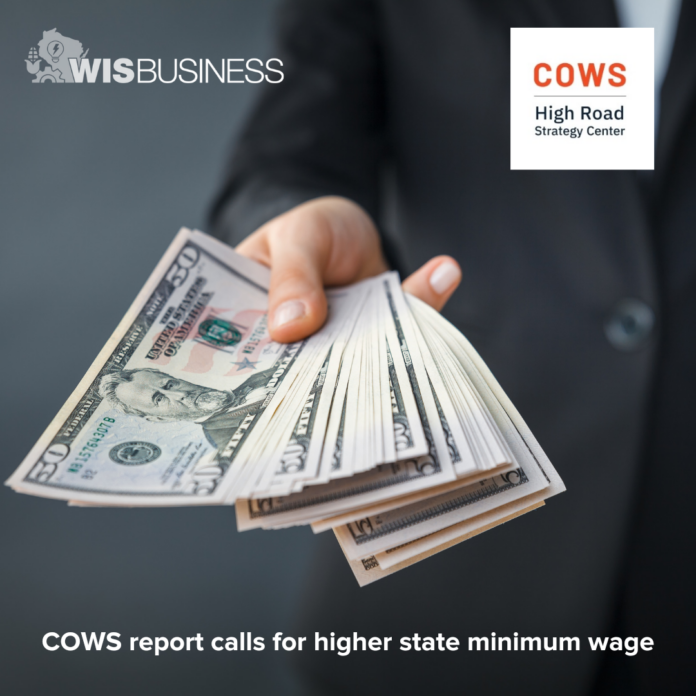A UW-Madison think tank is urging policymakers to raise the state’s minimum hourly wage, arguing low-income workers in Wisconsin are “falling behind.”
The progressive COWS High Road Strategy Center yesterday released a new report on how the state would be impacted by upping the minimum wage from its current level of $7.25 — equal to the federal minimum — to $15 or $20 per hour over the next five years.
“With a minimum wage of just $7.25, Wisconsin is part of a shrinking number of states using the federal standard to establish the wage floor,” COWS Associate Director and report author Laura Dresser said. “And while many workers have seen raises in recent years, we show that a stronger wage floor would reach hundreds of thousands of workers in the state.”
Wisconsin’s minimum wage is also below those of all but one neighboring state, Iowa, which has the same minimum hourly rate. By comparison, the minimum wage is $10.59 in Minnesota, $10.10 in Michigan and $13 in Illinois.
The report notes some may find the idea of a $20 minimum wage “absurd or even offensive.” But the “Fight for $15” movement among low-wage workers began even before the COVID-19 pandemic led to more awareness of the “essential” jobs classification, COWS notes.
“All of this means we should continue to challenge the notion of what the minimum can and should be,” report authors wrote. “To move our floor to a standard that workers can actually afford a decent life requires consideration of $20 per hour.”
While raising the state’s minimum wage to $15 would affect more than 375,000 workers, or nearly 15% of the labor force in Wisconsin, raising it to $20 would benefit nearly 900,000 workers, representing about a third of the state workforce.
Both of those totals include both the number of people who would be directly affected, as well as others who would see their pay rise as wage scales shift.
COWS says raising the wage floor would also help reduce economic disparities, particularly for women and Black and Hispanic workers. Under the $15 per hour scenario, 18% of female workers would get a raise compared to 11% of men.
Meanwhile, about one-fourth of Black and Hispanic workers would see wages rise, which is twice the share of white workers.
And most teenagers in the labor market would also benefit, with four out of every five of these workers getting a wage bump if the minimum were set to $15, the report shows.
Industries that would see major change include restaurants and retail, report authors found, noting two-thirds of all restaurant workers in the state would get a raise under a $15-an-hour minimum wage. That’s more than 100,000 workers.
Even industries with relatively high pay — health care and manufacturing — would also see an impact due to how many workers are employed in these broad sectors. While just 12% of health care workers would see wages increase under a $15 minimum, that equals 48,500 people. And for manufacturing, with 4.8% of workers seeing higher wages, that number would be 24,500.
See the release: https://www.wisbusiness.com/2023/cows-releases-cant-survive-on-7-25-higher-minimum-wages-for-working-wisconsin/
See the full report: https://cows.org/wp-content/uploads/sites/1368/2023/10/Cant-Survive-on-725.pdf
Listen to an earlier podcast with Dresser: https://www.wisbusiness.com/2022/wisbusiness-the-podcast-with-laura-dresser-of-cows/
–By Alex Moe






